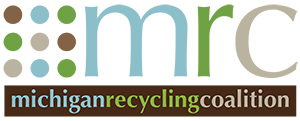Northwest Lower Michigan Organics Diversion Roundup



In a recent report prepared by RRS and commissioned by SEEDS Ecology & Education Centers and funded with a 2021 EGLE Market Development Grant, evaluated current prevention, rescue/recovery and recycling processing opportunities and applied feasibility of each option to each county in the region and modeled centralized composting and operating costs and a preliminary collection and transportation plan. It also projected GHG emission savings and job creation and identified actionable next steps for the region to support the organics circular economy.
The report identified:
GOALS
For 10 counties, a goal to divert a third of organic waste currently going to landfills. That's about 25,000 tons more than currently. The region can achieve this by:
- Increasing food waste prevention by 1,200 more tons/year
- Increasing food rescue by 750 more tons/year
- Increasing distributed processing of all types by 5,000 tons/year
- Increasing centralized processing by 19,000 tons/year
STRENGTHS
- Multi-stakeholder partnerships
- Early adopters & bright spots
- Stacked multi-disciplinary interests, including waste management, agriculture, GHG prevention, local economic development, and water quality
- Rapidly growing popular movement, cultural awareness
- Control of whole value chain is feasible
OPPORTUNITIES
- Enabling policy (both county & state) - including inexpensive landfill options
- Specialized haulers
- Processors at moderate scales
- Enough/consistent investment capital
NEXT STEPS
- EGLE: Ramping up statewide storytelling & investment through grants
- Emmet County: Continue to gain traction as a state leader
- MRC: Policy, Michigan Organics Council
- Networks NW: Convening local units of government around solid waste
- BARC: Innovating, piloting hauling, pre-processing, event management
- SEEDS: Developing a demonstration & training center
